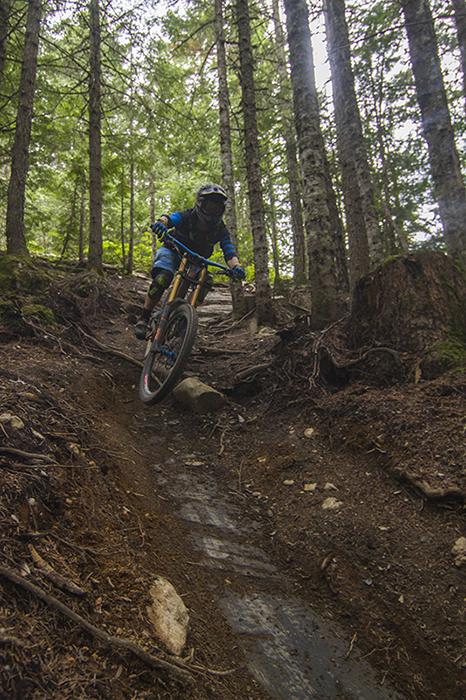Maintenance and Durability
I have one full season on the 40 and thus far haven’t done anything to it aside from wiping off the dust wipers from time to time. Fox recommends replacing the oil every 125 hours, which is fairly standard for higher end suspension. My fork is still feeling pretty smooth, but I’ll likely freshen up the oil before next spring, mostly as preventative maintenance.
Comparisons
The most obvious comparison for the 40 is clearly the Rockshox Boxxer World Cup, but unfortunately I haven’t spent nearly as much time on the Boxxer recently, so it’s tough to give a really in depth comparison. That said, there’s no question that the 40 is substantially stiffer in all directions. I’d say the 40’s damping feels a bit more supportive and it holds the front end higher in corners, but the Boxxer is a bit more supple over smaller bumps. The 40 wins out in terms of tunability since the Boxxer’s high speed compression setting isn’t externally adjustable, but otherwise the forks have the same basic adjustments. Service intervals are about the same for both forks, so I’d call that a wash, but the 40 seems to win on the durability front – I’ve heard quite a few stories of Rockshox Charger dampers failing, whereas I haven’t heard of many Fox FIT dampers failing. The Boxxer WC is a smidge lighter, but probably not enough to really matter on a DH bike. Price wise, they’re in the same ballpark, although Rockshox makes less expensive Boxxers, whereas the 40 is only offered as a top of the line model.

I spent last season on the Bos Idylle Rare Air FCV, which (like the Boxxer) is substantially less stiff than the 40. The Bos is also a bit more difficult to tune – it has the same external adjustments, but changes to the air spring aren’t as easy as on the 40. On the trail, the Bos is much more active than the 40, and it does a better job of ironing out small and mid-size bumps. But the 40 handles bigger hits quite a bit better, and it feels less divey in corners and on the brakes. The 40 is also lighter and less expensive by a few hundred dollars.
Bottom Line
Like I said at the outset, I knew going into this that the 40 had the chops to hang with the fastest riders on the planet. But is it a good fork for Joe “can’t even keep up with Gwin’s dust” Schmoe? I’d say yeah, especially if Joe is willing to sacrifice a little bit of comfort in the name of performance and tunability.
If you’re just looking for a big cushy couch of a fork, the benefits of the 40 might be somewhat lost. To be clear, the 40 is easy enough to tune that it can be made into a pretty cushy couch, but it’ll never be as squishy and comfortable as, for example, a Marzocchi 888 / 380, or for that matter, the Bos Idylle.
But if you’re looking to go as fast as possible and win races, the 40 is designed to do just that. Its composure under hard hits and the ability to quickly and easily change how the fork feels make it one of the best race forks on the market. And coming from a person who doesn’t race much anymore, and just wants good suspension on the front of my bike, I’m a big fan of the 40. Even though the clock isn’t ticking, I still want to push myself, and the 40 is more than willing to help me along.
